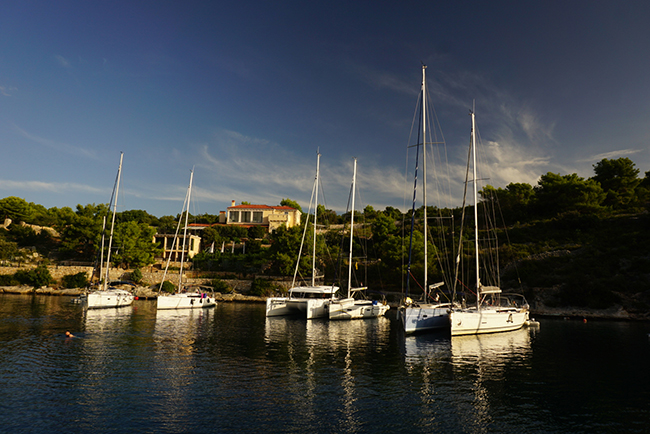Home Is Where the Fire Resilience Is
06 Jun 2024
Cottonwood Custom Builders’ fire-proof protections
By Holly Bowers » Photos by Hannah Finch
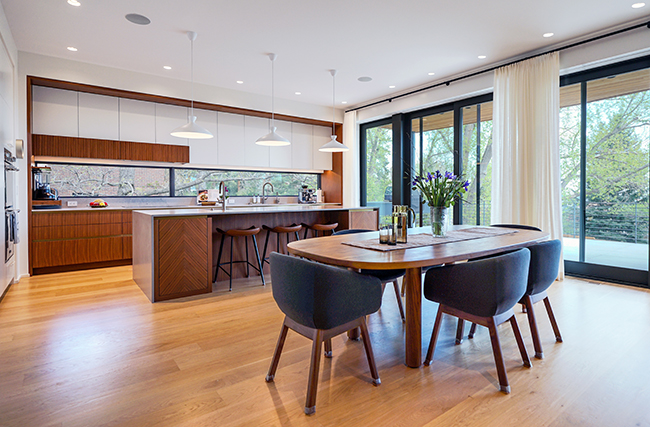
You could say that Greg and Ivonka’s home was forged in fire. On December 30, 2021, a team from Cottonwood Custom Builders was working on the exterior of the home when the Marshall Fire broke out. From their position on the construction site in South Boulder, the crew watched the fire sweep across open space toward Louisville and Superior.
The Marshall Fire would go on to burn 1,084 homes, making it the most destructive wildfire in Colorado history. In its wake, fire-resistant construction has become a priority for many homeowners across the Front Range. In March, Governor Jared Polis signed a bill that prevents homeowner associations and other neighborhood covenants from blocking fire-proofing measures such as metal fences and fire-resistant landscaping.
Building on Greg and Ivonka’s home began in 2020, well before the Marshall Fire, but fire resilience was always a concern. “Our neighborhood is considered at the highest risk of being burned in a wildfire because it abuts to open space, so fire mitigation was a top priority when designing and building our home,” the homeowners explain.
On the recommendation of their architect, Steven Perce of bldg.collective, Greg and Ivonka selected Cottonwood Custom Builders to construct their home. They were impressed by Cottonwood’s track record of quality workmanship and professionalism, and their shared belief in sustainability and energy efficiency made it a great match. Another benefit was Cottonwood’s dedication to fire-resistant home construction.
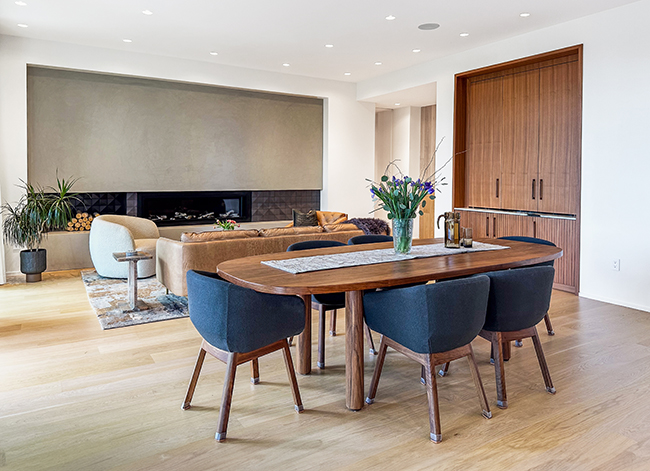
Founded by Jeff Hindman in 1995, Cottonwood has always prioritized transparency, honesty, and accuracy—it comes out of Hindman’s early career in Washington, D.C. advocating for competition in the phone industry. In Boulder, that means keeping up with the latest in both sustainable and fire-resistant building.
Cottonwood’s focus on fire-resistant building came out of the Fourmile Canyon Fire, the September 2010 fire that burned 169 homes. Just like the Marshall Fire 11 years later, it was spurred by low humidity and high winds. Hindman and his team rebuilt four homes that burned during the Fourmile Canyon fire and donated their time to helping homeowners get their maximum insurance coverage.
That experience inspired them to change their techniques. “That’s where we first became really aware of and acquainted with the importance of fire-resistant construction,” Hindman says.
Greg and Ivonka’s home showcases the techniques that Cottonwood has perfected since 2010. Boulder building codes require that homes like theirs that abut open space—an area called the wildland-urban interface, or WU —be built in a fire-resistant way as a buffer against wildfires. “That’s what happened with the Marshall Fire,” Hindman says. “Once the first row of houses caught on fire, and you had 100-mile-an-hour winds, the whole subdivision was gone.”
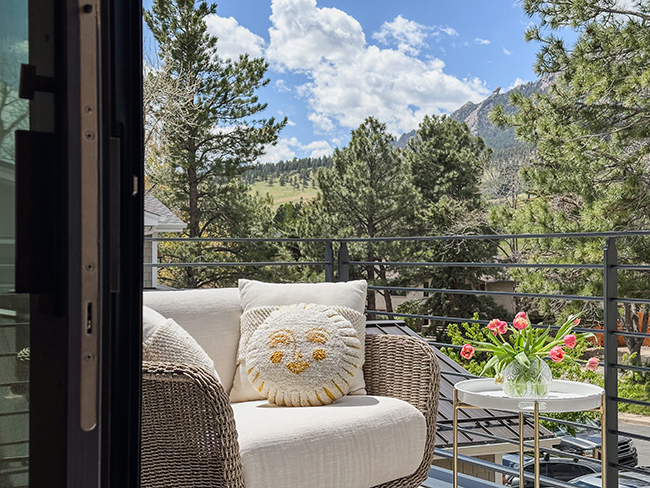
To prevent that, Cottonwood used fire-resistant materials on the exterior of Greg and Ivonka’s home. Hard-coated stucco, which is five-eighths concrete with a colored skim coat on top, covers most of the house. The garage, including the garage door, has wood siding that has been treated with fire-retardant. Both materials are non-combustible, which is key for fire prevention.
The roofing material is equally important. Greg and Ivonka’s roof is a flat, Class A EPDM rubber roof. EPDM flat roofs are made of a black rubber membrane that is very difficult to ignite, even if sparks land on them. That protects the wooden framing underneath.
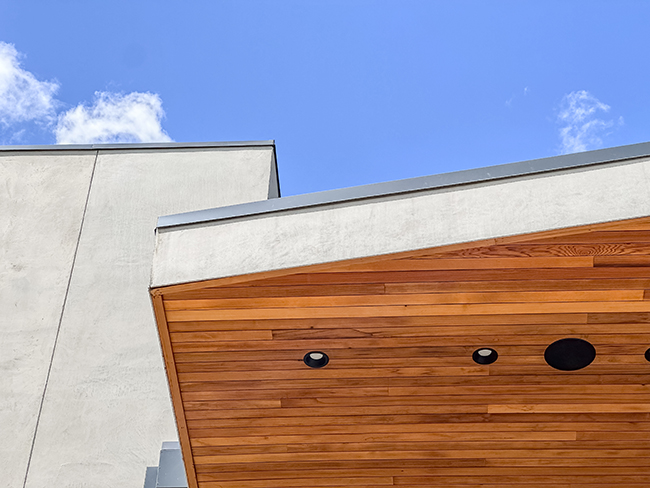 The home also features an unvented attic. While it’s easy to focus on the flames in a wildfire, embers are just as big a concern. If embers creep into the vents in an attic or crawlspace, the house can quickly go up in flames.
The home also features an unvented attic. While it’s easy to focus on the flames in a wildfire, embers are just as big a concern. If embers creep into the vents in an attic or crawlspace, the house can quickly go up in flames.
“Before the Fourmile Fire, many homes had vented, unconditioned attics,” Hindman explains. “It was just a way to save on installation costs.” But after realizing how much vented attics contributed to fire risk, “we only do conditioned attics,” he says.
Other resilience measures include a gravel perimeter between the house and the landscaping, which acts as a fire break. “Paying attention to your landscaping can make a huge difference,” Hindman notes. He advises against having bushes right next to your house that can catch fire. The same goes for wooden decks, which Hindman calls “a fuse on the side of your house.” Cottonwood uses steel frames with non-combustible decking that meets the WUI fire standard.
As important as the fire-resilient aspects of the house are, what they protect is even more valuable. With their home, Greg and Ivonka wanted to create a flexible and versatile space that could meet the evolving needs of their family. Building for resilience needed to balance with building for family life.
With the help of bldg.collective, Cottonwood, and the interior design services of Zaan Creative, Greg and Ivonka achieved exactly that. The home features a cozy reading nook, abundant storage spaces, a dedicated mudroom to keep the inevitable mess of daily life contained and gathering places for family life to unfold.
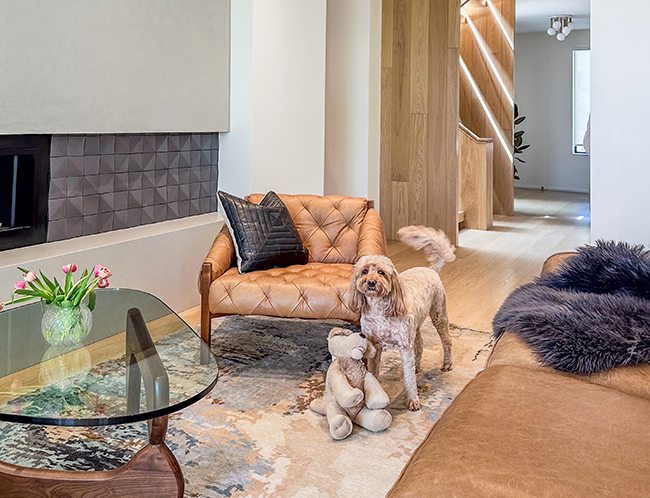
The home maximizes natural light and features beautiful views of the mountains visible outside the windows. But while the interior fosters a sense of connection to nature, Cottonwood also ensured the home would be protected from the outdoors in the event of a wildfire. That makes a big difference to Greg and Ivonka.
“It provides us with peace of mind and a layer of protection against the devastating effects of wildfires,” they say. “It enhances the safety of our family and our belongings.”
Architecture: bldg.collective
Interior Design: Zaan Creative
General Contractor: Cottonwood Custom Builders


